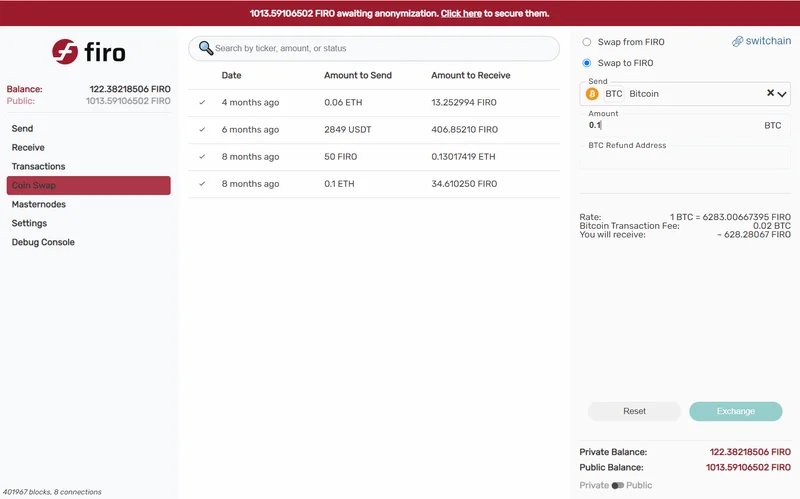BNB Signals | Binance Coin Trading Alerts & Insights
BNB Signals | Binance Coin Trading Alerts & Insights
Here is the feature article, written in the persona of Julian Vance.
*
The closure of a profitable, decade-old asset is an immediate red flag in any business analysis. Velveteen Rabbit, by all anecdotal accounts, was a performing entity with a loyal customer base. Its termination isn't a sign of failure, but a deliberate, strategic pivot. The owner, Ashish Thadani, has liquidated a known quantity to fund a high-risk venture: Firo, a concept described as 'Indian reimagined'. The central question isn't whether the food will be good, but whether the underlying business model justifies the initial sacrifice.
From a purely quantitative perspective, swapping a stable revenue stream for a speculative one is a questionable move. The Chennai dining market is fiercely competitive, and consumer loyalty is notoriously fickle, driven by the ceaseless churn of social media trends. A new launch, such as the recent announcement that Firo launches in Chennai with a restaurant and cocktail bar, must not only capture initial interest but also establish a system for consistent, high-quality delivery to survive past the first fiscal quarter. Most new ventures fail to do this.
Firo, however, is not a typical startup. Thadani has hedged his bet by investing in what appears to be the single most valuable asset in this equation: proven, disciplined human capital.
The critical variable mitigating the risk of this launch is Chef Ajit Bangera. His resume is the equivalent of a blue-chip stock in the culinary world. As the former executive chef at ITC Grand Chola, he wasn't just a creative force; he was a systems architect. He scaled luxury dining, launched the award-winning Avartana (a restaurant that fundamentally altered the perception of South Indian fine dining), and oversaw the rollout of multiple outlets for ITC Ratnadipa in Colombo. This is not the profile of a temperamental artist; it’s the profile of a seasoned operator.

Bangera’s value proposition is twofold. First, there's the marketable innovation—the "flying idlis" and creative flair that generate press. But the more salient factor for long-term success is his documented focus on standardization and consistency. These are the unglamorous, operational metrics that separate a flash-in-the-pan from a sustainable enterprise. While the market gets excited by a theatrical smoked old fashioned or a surprising yoghurt sorbet chaat, the restaurant’s survival will depend on whether that chaat tastes exactly the same on a slow Tuesday as it does on a packed Saturday. Bangera’s entire career is a testament to delivering that level of precision.
I've analyzed countless corporate turnarounds and market pivots, and replacing a proven, cash-flowing asset with an unproven concept is a move that almost always raises red flags. The rationale here is to preempt brand fatigue, but the execution risk is substantial. The investment in Bangera, and his ability to recruit his own trusted talent like Chef Abhishek Mody from Bangkok, is the only logical explanation. Thadani isn't just buying a chef; he's buying an entire operational philosophy. The team has deep ITC experience—Mody himself spent about 10 years there, to be more exact, a full decade before his international move. This isn't a new team; it's a proven unit being deployed in a new vehicle.
With the operational risk seemingly mitigated, the focus shifts to the product itself. 'Indian reimagined' is a dangerously ambiguous category, often a marketing term for incoherent fusion. A poorly executed fusion menu is like a poorly diversified portfolio—the assets clash and drag each other down. Firo’s initial offerings, however, suggest a more disciplined approach. Dishes like the Goa-inspired pork dosa tacos or the palak with burrata instead of paneer demonstrate a clear thesis: leveraging familiar Indian flavor profiles while methodically substituting components to create novelty without sacrificing cohesion.
This strategy is like a software update, not a new operating system. It’s evolution, not revolution. The prawn ceviche uses kagzi lemon, the cocktails use spiced jaggery and blue pea flower. The inputs are localized and authentic, while the output is globally legible. It’s a smart way to appeal to a modern palate without alienating the traditional one. The greatest risk here is over-engineering. The safed dal, for instance, was noted as paling in comparison to a traditional dal makhani, a data point that suggests some "innovations" may be a net negative against their classic counterparts. Finding the precise equilibrium between novelty and comfort will be Firo’s primary challenge.
The launch itself is being handled with a degree of control. An evening-only service and a pre-booking system (with a Rs 1000 per head deposit) are mechanisms to manage initial demand, control quality, and ensure the kitchen isn't overwhelmed. This allows the team to calibrate its systems in a live environment without being subjected to the chaos of an unrestricted opening. It's a soft launch in all but name, designed to collect data and optimize performance before scaling. You can almost hear the low hum of the ITC chefs who showed up on night one, a room full of mentors and colleagues, their laughter a qualitative signal of industry confidence in Bangera’s system. It’s the kind of social proof you can’t buy.
On the surface, shuttering a beloved 10-year-old establishment for an experimental concept seems like an emotional, high-risk gamble. But the data suggests a different story. The decision to launch Firo is a calculated bet on a person and a process, not just a product. The real investment here is in Ajit Bangera's operational discipline. The "reimagined" food is the high-upside, volatile component, but it's built on a foundation of institutional knowledge and executional consistency. The asymmetry is clear: if the menu is a hit, the returns will be exponential. If it merely performs adequately, the underlying operational excellence provides a high floor for success. This isn't a bet on fusion food; it's a bet that in the chaotic restaurant industry, a systematic approach will always outperform unstructured creativity in the long run.